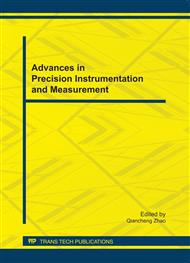p.181
p.187
p.194
p.199
p.205
p.209
p.214
p.219
p.225
Investigation on the Transmission Efficiency of the Planetary Gear Train
Abstract:
A model for the transmission efficiency of the planetary gear train has been proposed based on the principle of energy. The network topology for the planetary gear train is established with the graph theory by substitution the net nodes for the parts. According to the principle of conservation of energy, the interaction model of the energy transfer of the gear train is built by the way of integration the energy transfer equations between the nodes. With the investigation on the power losses, the transmission efficiency of planetary gear train can be calculated.
Info:
Periodical:
Pages:
205-208
Citation:
Online since:
September 2011
Authors:
Price:
Сopyright:
© 2012 Trans Tech Publications Ltd. All Rights Reserved
Share:
Citation:


